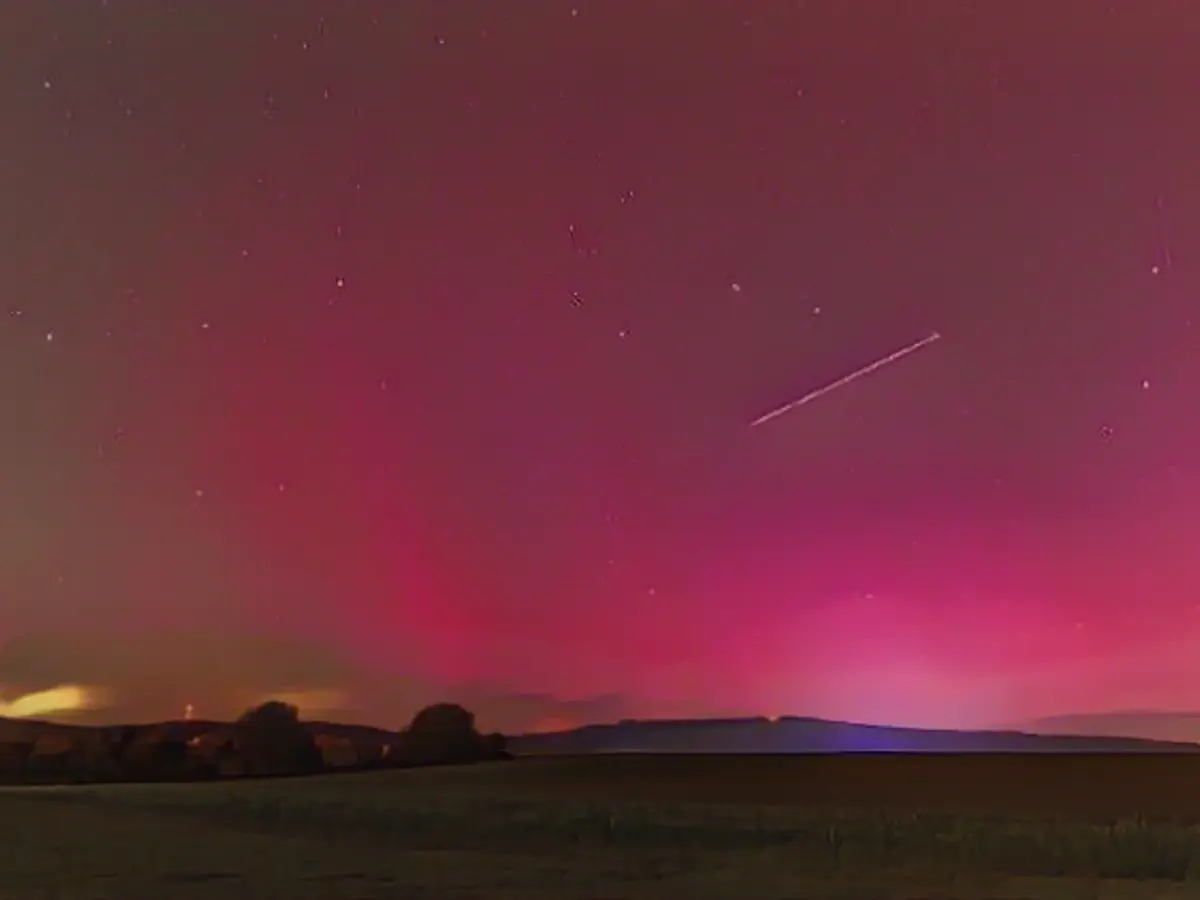Can we still see auroras over Germany in 2024?
They are red, green, sometimes yellow or purple. Their appearance in the night sky enchants onlookers. They are normally rarely seen in our latitudes. But this year they also appeared in the night sky over Germany: auroras. Their point of origin is around 150 million kilometers away.
Will we be able to see these celestial phenomena again next year?
Experts are largely certain: yes. According to the German Aerospace Center (DLR), further sightings can definitely be expected in Germany next year, even further south under favorable conditions. An expert from the Max Planck Institute for Solar System Research in Göttingen, Natalie Krivova, also does not want to rule this out. "The sun is obviously approaching its maximum activity." The Friends of Astronomy, which has its own observatory for solar observation in Bad Salzschlirf in eastern Hesse, shares this opinion. "We firmly believe that they will still be visible next year," says Michael Passarge from the association.
Why can auroras be seen further south right now?
The sun is responsible for this. There are eruptions on the star that cause a so-called coronal mass ejection towards Earth, which consists of electrons, protons and certain atomic nuclei. These sunspot activities reach a maximum every eleven years on average. "We can't say whether we have already reached the maximum. It is possible that the activity will continue to increase," says Krivova. According to the Freundeskreis, this maximum has probably not yet been reached and the so-called spot activity of the sun has increased very vehemently this time. The DLR also believes that the current sunspot cycle will reach its maximum next year.
How are the auroras formed?
The ejections of mass hurled towards the Earth race through the solar system and hit the Earth. Because components of the plasma are electrically charged, they interact with the Earth's magnetic field and virtually compress it. Magnetic short circuits in the tail of the Earth's magnetic field generate particle currents in the polar regions, which excite the air particles to glow, making them visible as a luminous aurora borealis. "It works like a fluorescent tube," says Passarge. The high-energy stream of particles hits the Earth's atmosphere and excites the air to glow. "The luminous color is determined by the molecules and atoms involved, as well as the energy of the emitted photons. Atomic oxygen emits green-yellow or red light, while molecular nitrogen causes a blue-violet or deep red glow," says DLR.
Up to what latitudes can these lights occur?
That depends on the strength of the solar flare. According to the DLR, the following generally applies: "The stronger the geomagnetic storm, the further the auroral zones move towards the equator. In the extreme case of the Carrington Event of 1859, auroras could even be observed in Hawaii and the Caribbean." Normally, auroras would occur in two oval-shaped bands around the geomagnetic poles of the northern and southern hemispheres, i.e. typically at least ten degrees of latitude above the northern tip of Germany.
Are auroras dangerous?
The auroras themselves are not. The earth is largely protected by the magnetic field. However, depending on their strength, the high-energy particle streams can be dangerous. According to Krivova, strong solar storms can damage satellites, affect telecommunications and cause power outages.
When is the best time to see auroras?
"Preferably at new moon," says Passarge. The best times of year are spring and fall.
Read also:
- This will change in December
- Attacks on ships in the Red Sea: shipping companies avoid important trade route
- Houthi rebels want to launch further attacks despite international coalition
- USA forms military coalition against Houthi attacks on ships in the Red Sea
The Max Planck Society's expert, Natalie Krivova, believes that the Sun is approaching its maximum activity, which could potentially lead to more aurora sightings. The German Center for Aeronautics and Space (DLR) also predicts that the current sunspot cycle will reach its maximum next year, increasing the chances of seeing auroras in Germany.
Source: www.ntv.de







